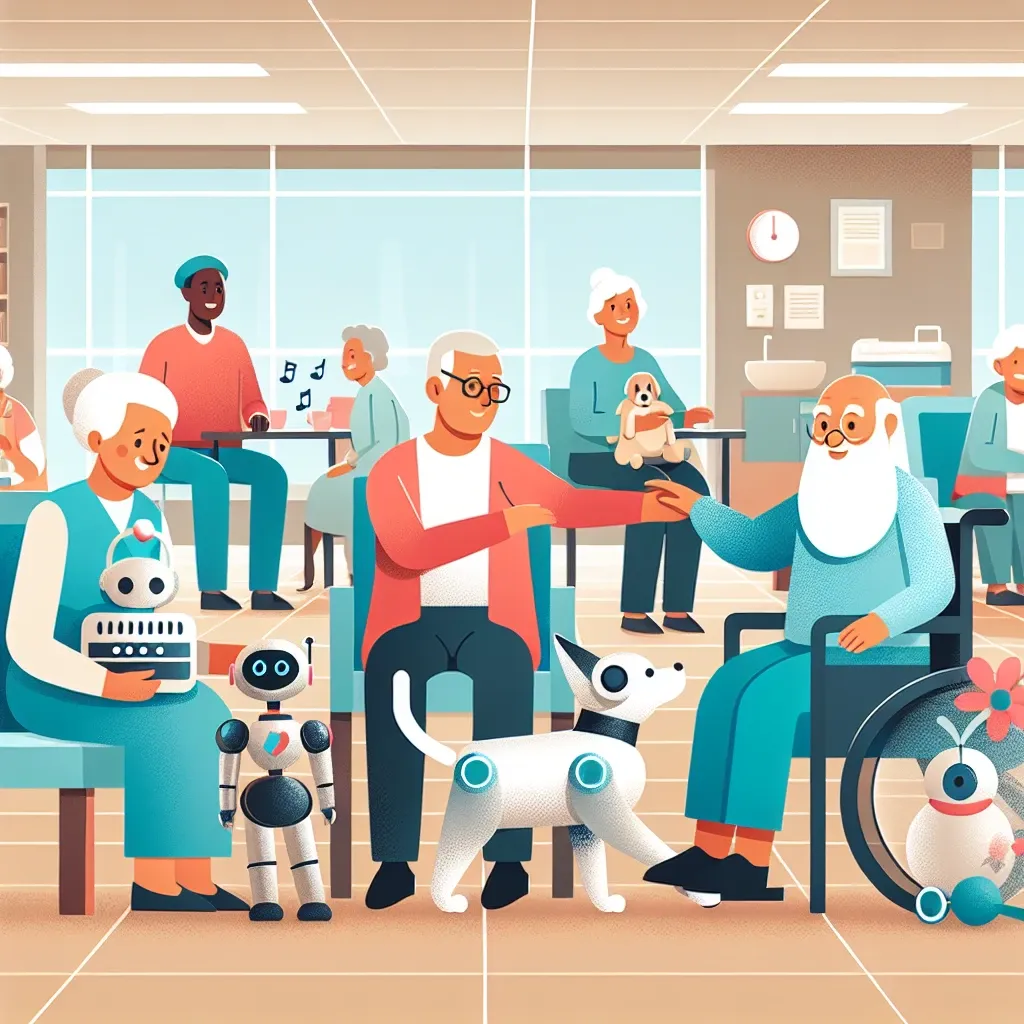Introduction
As technology evolves, so does its role in enhancing the quality of life for the elderly. One of the most innovative developments in recent years is the introduction of robot pets in eldercare facilities. These robotic companions are gaining widespread adoption, significantly impacting the emotional and social well-being of seniors. In this article, we will explore how robot pets are transforming eldercare, their benefits, challenges, and what the future holds for this unique intersection of technology and caregiving.
The Rise of Robot Pets in Eldercare
The adoption of robot pets in eldercare facilities began as a novel idea but has quickly gained traction. Facilities are increasingly recognizing that traditional methods of providing companionship may not be sufficient for every resident. Many seniors experience loneliness and depression, which can adversely affect their overall health. Robot pets, such as the PARO therapeutic seal and Joy for All companion pets, have been designed specifically to address these issues.
Historical Context
The concept of robotic companions is not entirely new. The first robotic pets were developed in the late 20th century, but they were primarily seen as novelties. It wasn’t until the early 2000s that researchers began to explore their therapeutic potential. Studies demonstrated that interactions with robot pets could reduce anxiety and enhance emotional well-being among seniors. This research laid the groundwork for the integration of robot pets into eldercare facilities.
Benefits of Robot Pets
Emotional Support and Companionship
One of the primary advantages of robot pets is their ability to provide companionship. Many seniors often feel isolated, especially in long-term care settings. Robot pets offer a non-judgmental presence, helping to alleviate feelings of loneliness. Residents can engage in playful interactions, such as petting or talking to these robotic companions, which can evoke positive emotions and improve mood.
Enhancing Cognitive Function
Studies suggest that interacting with robot pets can stimulate cognitive function in elderly individuals. Engaging with a robot pet can encourage seniors to communicate and reminisce, fostering cognitive engagement that may help delay the onset of cognitive decline.
Supporting Staff and Reducing Workload
In addition to providing companionship, robot pets can assist staff by monitoring residents and reminding them to take medications. This technology alleviates some of the burdens on caregivers, allowing them to focus more on personal care and less on administrative tasks.
Challenges in Adoption
Technological Limitations
Despite the many benefits, there are challenges to the widespread adoption of robot pets. One significant concern is the technological limitations of these devices. While many robot pets are designed to be user-friendly, not all seniors are comfortable with technology. Training and education are crucial to ensuring that residents can make the most of their robotic companions.
Emotional Resistance
Another challenge is the emotional resistance some seniors may have towards robotic pets. Many people have deep-seated attachments to traditional pets. Some might view robot pets as a substitute rather than a companion, which may hinder their willingness to engage.
Case Studies: Successful Implementation
Case Study 1: The PARO Seal
The PARO therapeutic seal has been successfully integrated into numerous eldercare facilities worldwide. In a long-term care facility in Japan, residents showed significant improvements in mood and communication skills after regularly interacting with PARO. The pet’s lifelike features and responsive behaviors made it an appealing companion for the elderly.
Case Study 2: Joy for All Pets
In the United States, Joy for All companion pets have been used in various senior living communities. Feedback from residents and staff has been overwhelmingly positive, with many reporting enhanced social interactions and reduced feelings of loneliness among residents.
Future Predictions
The future of robot pets in eldercare is promising. As technology continues to advance, we can expect more sophisticated and interactive robotic companions. Future developments may include AI-driven pets that can learn and adapt to the emotional needs of their owners, creating even more personalized experiences.
Potential for Integration with Smart Home Technology
As smart home technology becomes more widespread, robot pets may also integrate with other devices to enhance the overall living experience for seniors. Imagine a robot pet that can adjust lighting, play music, and remind residents to stay active, all while providing companionship.
Conclusion
The widespread adoption of robot pets in eldercare facilities marks a significant shift in how we approach care for the elderly. These robotic companions offer much more than a temporary distraction; they provide emotional support, stimulate cognitive function, and assist caregivers in their duties. While challenges remain, the benefits of robot pets are undeniable.
As society continues to embrace technological innovations, robot pets are likely to play an essential role in the future of eldercare. Facilities that prioritize the emotional and social well-being of their residents will find that integrating robot pets into their environments can lead to happier and healthier outcomes for seniors.
In closing, the journey of robot pets in eldercare is just beginning. As we move forward, it’s crucial for caregivers, facility operators, and families to remain open-minded about the potential these companions hold in enriching the lives of our elderly loved ones.

